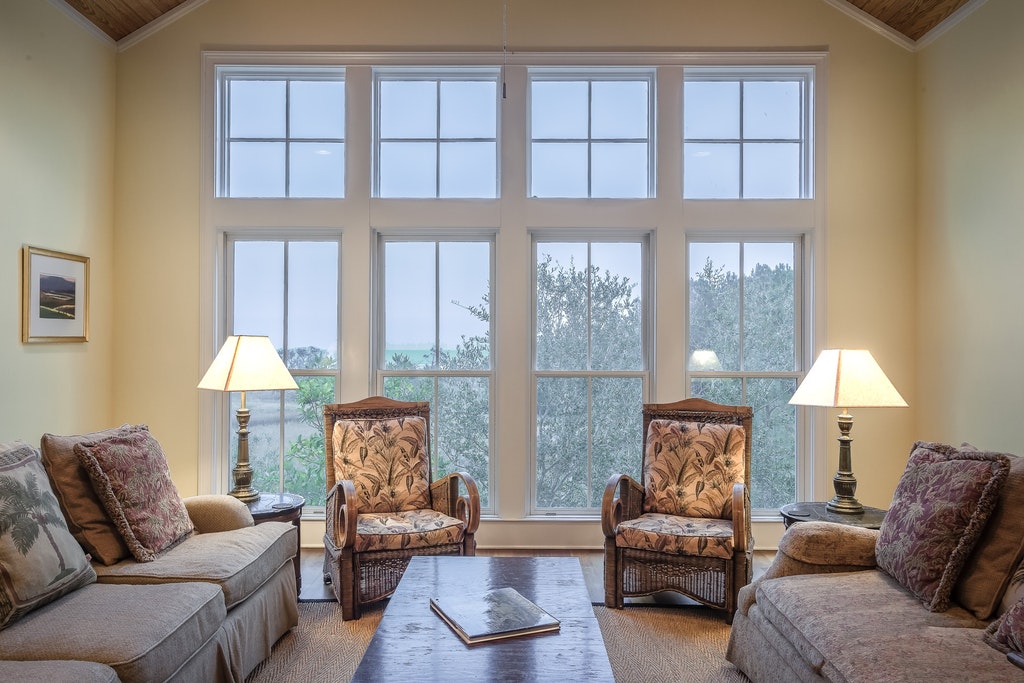Window plugs are an easy, affordable way to soundproof your windows. They can be installed in minutes and can make a significant difference in the noise level coming from outside. Window plugs work by trapping air between the window and the plug. This creates an insulation barrier that blocks out sound.
Window plugs come in a variety of sizes and shapes, so you can find one that fits your window perfectly. They are also available in a range of colors, so you can choose one that matches your decor.
Window plugs are a great way to soundproof your windows on a budget. They are easy to install and available at a fraction of the cost of other soundproofing materials.

Why Use Soundproof Window Plugs?
There are many reasons why you might want to use soundproof window plugs. One of the most common reasons is to reduce noise from outside the window.
This can be especially helpful if you live in a city and are trying to get some peace and quiet. Another common reason to use window plugs is to keep warm in the winter and cool in the summer.
By blocking out the temperature differential between the inside and outside of your home, you can save on your energy bill. Finally, using window plugs can also increase your privacy by preventing people from being able to see into your home.
How Much Soundproof Window Insulation Do I Need?
If you are looking to soundproof your windows, you may be wondering how much insulation you need. The answer to this question depends on a few factors, including the type of insulation and the thickness of the insulation.
Generally, the thicker the insulation, the better it will be at blocking out sound. However, there is a limit to how much insulation you can use before it becomes too difficult to open and close your windows.
The best way to determine how much insulation you need is to measure the thickness of your current window insulation and then add an extra inch or two. This should be enough to block out most of the sound from outside.

Making a Window Plug: Step-by-Step Guide
Window plugs are an important part of a home’s insulation. They keep the heat in during the winter and the cool air in during the summer. If you have an old window that does not have plugs, or if you are looking to add more insulation to your home, making your own window plugs is a great option.
1. Cut the Board
First, you will need to cut a piece of wood that is the same size as the window you want to plug. You can use any type of wood that you have on hand, but it is best to use something that is not too heavy.
Once you have cut the piece of wood, you will need to cut a piece of foam insulation that is slightly smaller than the window opening. If you are using spray foam insulation, make sure to avoid getting it on the glass.
Next, apply a layer of adhesive to the back of the foam insulation. Then, press it into place against the window frame.
2. Cut the Soundproof Mat
When making a window plug, cutting the soundproof mat is the first step. This is commonly the mass loaded vinyl or MLV.
Another option could be fiberglass panels. You will want to make sure that you have a good quality blade to make the cleanest cut possible.
Cut the soundproof mat to size, making sure to leave enough room for overlap on all sides. Once it is cut to size, adhere it to the window with construction adhesive.
3. Cut the Acoustic Foam
Window plugs are a great way to reduce noise coming in or out of your window. There are many ways to make a window plug, but this guide will show you how to make a window plug using acoustic foam.
To get started, you will need some acoustic foam, a utility knife or scissors, and an optional ruler.
The size of the window plug will depend on the size of your window, but it is typically recommended to make the plug slightly smaller than the window itself.
Once you have all of your materials, cut the acoustic foam according to the diagram below. Make sure to use sharp blades when cutting the foam – a utility knife or scissors should work well. If you find that the foam is difficult to cut, try scoring it with a blade first before cutting all the way through.
4. Glue Materials Together
Window plugs are an easy and affordable way to soundproof a room. The most important part of the process is making sure you have the right materials. You will need a piece of plywood or MDF, acoustic foam, soundproofing mat, and spray adhesive.
Once your board, acoustic foam, and soundproof mat are all cut to size, you can start to assemble the layers of the plug.
You can use spray adhesive or any other strong adhesive to hold the pieces together. Make sure that the seams between the pieces are well-sealed so that no sound can escape.
The final step is to install the plug in the window frame. Make sure it is sealed tightly against the frame so that no air can escape. If necessary, use some caulking to seal any gaps between the plug and the frame.
5. Cover Plug-In Fabric
Window plugs are a great way to cover up an open window and keep the cold air out in the winter, or the hot air out in the summer.
However, one disadvantage of putting a window plug into your window is that they are not necessarily attractive.
When already dealing with an ugly window, adding a fabric cover overtop of a plug can make it stand out even more. If you are looking for a more seamless look, try using a fabric that matches your curtains or blinds.
6. Add Handles
Window plugs are a great way to soundproof a room, but they can be a little difficult to remove if you don’t add handles.
By adding handles, you can make the window plug easy to remove when you need to get in and out of the room. This is also an optional step, but it may help with the functionality of your window plug.
7. Insert Plug
Window plugs are an easy and affordable way to soundproof your windows. Once you have constructed your window plug, it will be time to insert it into the window well.
To do this, you will simply be pushing the plug into the wall. The window well is the area around your window that is typically filled with dirt or gravel.
Make sure that the plug is pushed all the way into the well and that there are no gaps between the plug and the wall. If there are any gaps, sound can escape and you will not be able to achieve maximum soundproofing. You may need to use a rubber mallet to help push the plug into place.
How To Install Window Plugs for Soundproofing
Installing window plugs is an easy way to improve the soundproofing in your home. There are a few different types of window plugs you can use, so it’s important to choose the right type for your windows.
Foam plugs are a popular choice because they’re easy to install and affordable. You can buy them at most hardware stores.
Installing window plugs is a great way to improve the soundproofing of your home. It can be done with a few simple steps:
- Measure the size of the window you want to plug and purchase plugs that are slightly smaller than the measurement.
- Drill a hole in each plug that is the same size as the screw on your window sill.
- Insert screws into each plug, making sure they are tight against the window sill.
- Tape foam around each plug to create a tighter seal and prevent sound from escaping or entering your home.
Conclusion
In conclusion, the soundproof window plug is an easy and effective way to reduce noise pollution in your home. It is a simple, inexpensive solution that can be used in any window. The plug creates a tight seal that blocks out unwanted noise. If you are looking for a way to reduce noise pollution in your home, the soundproof window plug is the perfect solution.


